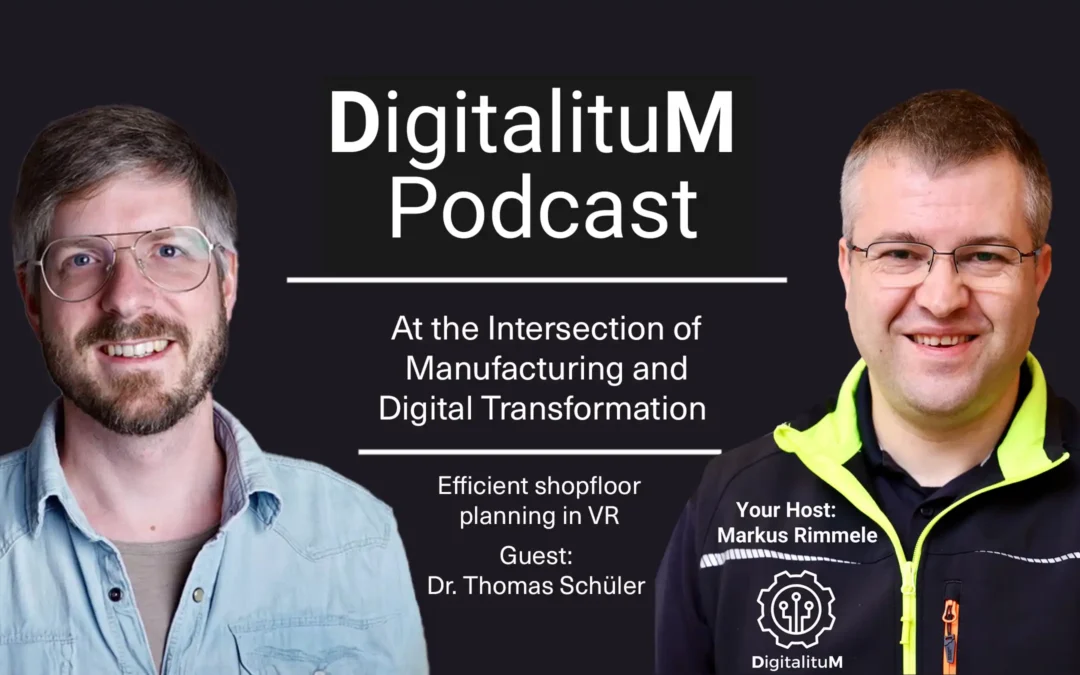Efficient Shopfloor Planning in VR with Dr. Thomas Schüler from HALOCLINE
In the fourth episode of the DigitalituM Podcast, I had the honor of interviewing Dr. Thomas Schüler, the CEO of HALOCLINE. Dr. Schüler has an impressive background in virtual reality and shared fascinating insights on how VR can transform the manufacturing industry. Our conversation focused on the challenges facing the industry and how digital tools like AR, VR, IoT, and AI can help address these challenges.
HALOCLINE: Rethinking Shopfloor Planning
HALOCLINE empowers practical experts in the manufacturing industry to plan and design work environments using virtual reality. The software offers an intuitive platform where users can sketch workspaces, import CAD models of objects, and analyze processes for optimization. The great advantage of HALOCLINE is that the planning is not only visual but also functional. It allows for the simulation and optimization of weight, ergonomics, and object placement in assembly scenarios, ensuring ergonomic standards are met.
Virtual Reality for Analyzing Work Conditions
One particularly exciting aspect of HALOCLINE’s technology is its ability to analyze human posture and movements in the virtual environment. This provides valuable insights into optimal working conditions and enables the ergonomic design of assembly processes. VR opens up new possibilities for simulating work environments while simultaneously improving efficiency.
Applications Across Various Industries
Dr. Schüler shared several success stories where HALOCLINE has been applied in industries like medical device production and automotive manufacturing. Through virtual planning, companies were able to save both time and costs. The ability to collaborate virtually proved to be a significant advantage, as teams can work together seamlessly across the globe.
The Future of Immersive Technology
The future of immersive technology, especially in engineering applications, looks promising. Dr. Schüler spoke about upcoming advancements in standalone VR headsets and extended reality features, which will further expand the possibilities of VR in the manufacturing industry. These technologies will allow engineers and planners to work even more efficiently and flexibly.
Key Takeaways from the Episode:
- HALOCLINE enables shopfloor planning and design in manufacturing through VR.
- The software supports process analysis and optimization of ergonomics and weight in assembly scenarios.
- HALOCLINE has proven effective in industries like medical device production and automotive manufacturing, making shopfloor planning more efficient and cost-effective.
- VR offers valuable insights into working conditions by analyzing human movements and postures.
- The future of immersive technology looks bright, with new VR headsets and extended reality features on the horizon.
The conversation with Dr. Schüler powerfully illustrated how HALOCLINE and virtual reality are changing the way work environments are planned and optimized in manufacturing. If you want to learn more about how VR is revolutionizing shopfloor planning, be sure to check out the full episode!
SHOW NOTES and LINKS:
DigitalituM LinkedIn page: https://www.linkedin.com/company/digitalitum/
Markus’s LinkedIn page: https://www.linkedin.com/in/markusrimmele/
Marek Carbon LinkedIn: https://www.linkedin.com/in/marekczarzbon/
Aidar Solutions website: https://aidarsolutions.com/
Halocline Youtube links:
Halocline Youtube Channel
Halocline in 1 minute
Halocline Sanner Medical Item Part 1
Halocline Sanner Medical Item Part 2
Takeaways
Virtual reality technology can solve shop floor planning problems in the manufacturing industry.
Halocline empowers practical experts to design safe and efficient work environments using their 3D editor.
Halocline offers ergonomic analytics to optimize worker movements and reduce waste. Halocline‘s software uses virtual reality technology to optimize shop floor planning and improve efficiency.
The software analyzes object positioning and human postures to enhance ergonomics.
Collaboration and feedback from different stakeholders, including workers on the shop floor, are facilitated.

